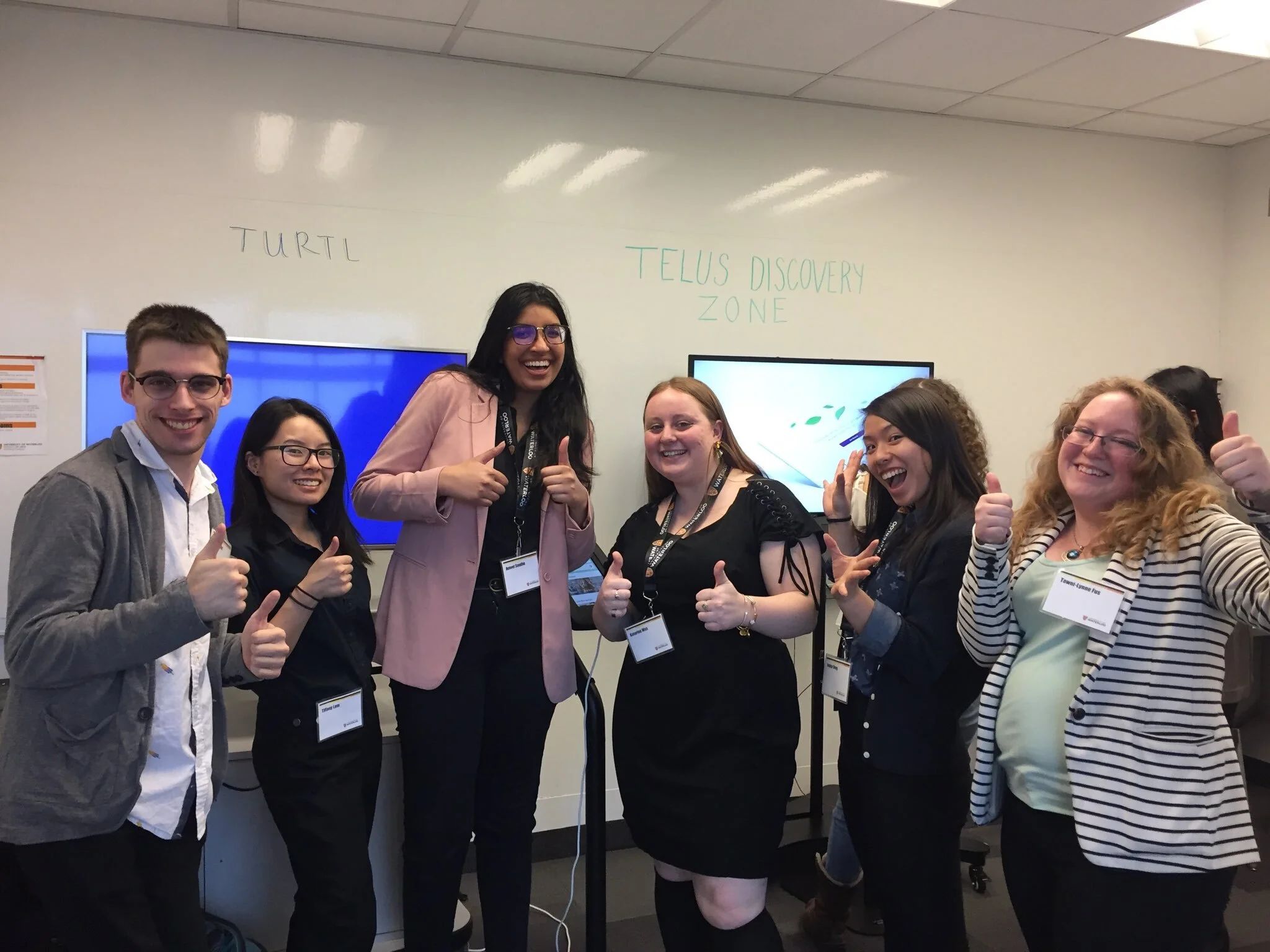For our final design project of undergrad (Winter 2018), we were tasked with designing a solution based on one of the UN Sustainable Development Goals. Within a 6-week timeline we were to create a feasible solution that contributed to reaching one or more of these goals; create a working prototype, as well as a business pitch as if we were about to launch in the real world.
TEAM MEMBERS: Avneet Sandhu, Janice Dong, Jeremy Molko, Katarina Wex, Tawni Fus, Tiffany Lam
MY ROLE: Visual Design, Marketing, Business Writing
OVERVIEW
Our team chose to focus on combatting fast fashion, which is the overproduction of clothing that results in the extreme excess of water waste, pollution, and an unsustainable level of consumption. Our solution is turtl, a mobile-first website that allows users to easily browse the sustainable shopping options around them, including: thrift, consignment, and brand-new retailers. Turtl also aims to make consumers aware of these retailers practices’ in the space of eco-friendliness and sustainability, through user-generated reviews combined with a digestible academic audit. In addition to this, turtl provides its users with educational articles and blog posts on the effects of fast fashion on the environment, and how they can make more sustainable lifestyle choices. Education is key to growing the slow fashion movement, which turtl aims to do, one purchase at a time.
IDEATION & INITIAL RESEARCH
We started out by looking at the 17 UN Sustainable Goals and narrowed them down to 6 topics we wanted to do further research on. We then went on to explore the various problems we could solve by asking a series of “how might we” questions. This eventually led us to the negative environmental effects of fast fashion.
MARKET RESEARCH & TARGET AUDIENCE
Once we finalized our idea, we moved on to market research. Before determining a target demographic, we wanted to know what people knew about the topic itself. We made a detailed Google survey to get a general sense of people’s awareness of fast fashion, current shopping behaviors and sustainability. Here are the questions we asked:
Age, gender, city of residence
Do you consider yourself to be eco-friendly?
What actions do you take that you consider to be eco-friendly?
Do you shop at second-hand stores? I.e. thrift or consignment stores such as Value Village, Goodwill, Plato’s Closet, etc.
If yes, where do you shop?
Have you heard of any of these second-hand online storefronts?
Have you purchased clothes from any second-hand online retailers?
How much of your current clothing purchases are affected by current trends?
What affected your purchasing decisions, either online or in-store?
How much do you typically spend on each item?
Are there any fabrics/textiles that you avoid purchasing? If so, why?
Have you ever heard of fast fashion?
What do you define fast fashion as?
How many times do you typically wear an item of clothing in its lifetime?
Do you follow the care instructions on your clothing labels?
What do you do with a clothing item that is damaged, excluding undergarments and socks?
What do you do when you’re done with an item of clothing, excluding undergarments and socks?
Do you know how to mend/sew clothing?
Out of 100 responses, the most compelling data we collected was:
This data really pushed us to make our site based on education. Since fast fashion was still a relatively unfamiliar concept to many, we wanted to show that there are a multitude of ways of making sustainable shopping choices and how to become a smarter shopper.
BRANDING & DESIGN
The name “turtl” stemmed from our two main goals for the site: promoting slow fashion and sustainability. Since turtles are a slow moving animal and are often linked with the being eco friendly (save the turtles!) we decided that that would be the name of our site.
FINAL PROTOTYPE
FINAL THOUGHTS
Team photo at the Project Showcase
I was really happy that we decided to choose to tackle the issue of fast fashion as it is a topic that I find very fascinating. The textiles and fashion industry is not something that is commonly associated with pollution, so I’m glad we were able to bring attention to it. Though designing as a team was fun, the biggest takeaway I had from this project was delving in to the business end of product development.







